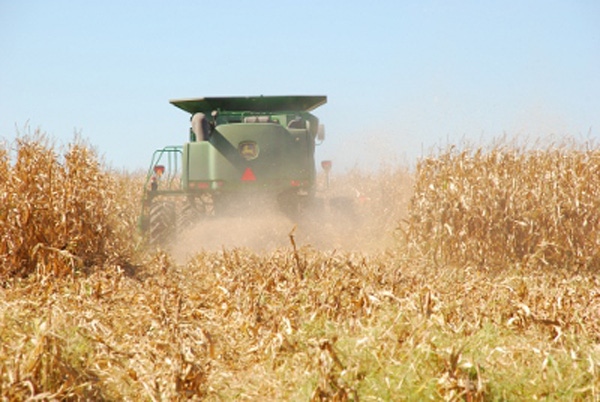Analysts raised the expected season-average farm price for corn 10¢ on both ends of the range to $3.45-$4.05 per bushel, in the September World Agricultural Supply and Demand Estimates. If realized, total forecast production of 13.58 billion bushels would represent the second-highest yield and third-largest crop on record, according to the Agricultural Marketing Service.
September 12, 2015

Analysts carved some yield from the corn crop in the latest World Agricultural Supply and Demand Estimates (WASDE) but it still promises near-record production.
WASDE projects corn yield 1.3 bushels per acre less than in the August forecast, at 167.5 bushels per acre.
If realized, total forecast production of 13.58 billion bushels would represent the second-highest yield and third-largest crop on record, according to the Agricultural Marketing Service.
Analysts raised the expected season-average farm price for corn 10¢ on both ends of the range to $3.45-$4.05 per bushel.
Corn futures were mostly 11¢ to 12¢ higher across the board on Friday. Through the front six contracts, they closed an average of 24¢ higher week-to-week.
With a projected increase in wheat stocks, the expected season-average farm price was lowered 20¢ on the high end to $4.65 to $5.35 per bushel.

18 photos show ranchers hard at work on the farm
Photos of hard-working ranchers doing what they do best - caring for their livestock and being stewards of the land. See reader favorite photos here.
The season-average farm price for soybeans was unchanged from the previous forecast at $8.40 to $9.90 per bushel.
Incidentally, forecasters with the National Weather Service Climate Prediction Center said this week there is an approximately 95% chance that El Niño will continue through the Northern Hemisphere winter of 2015-16, gradually weakening through spring 2016. Across the contiguous United States, they expect minimal temperature and precipitation impacts associated with El Niño during the early fall (Northern Hemisphere). Forecasters expect El Niño impacts to increase into the late fall and winter.
You might also like:
70 photos honor the hardworking cowboys on the ranch
Chipotle facing lawsuit for GMO-free claims
About the Author(s)
You May Also Like





